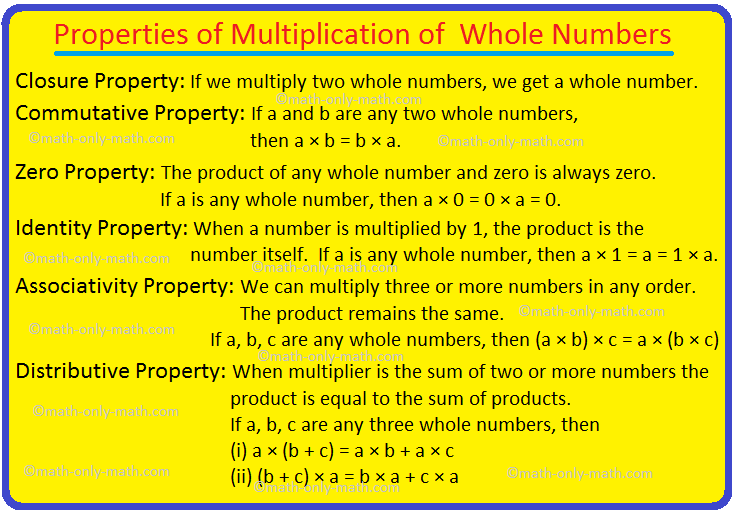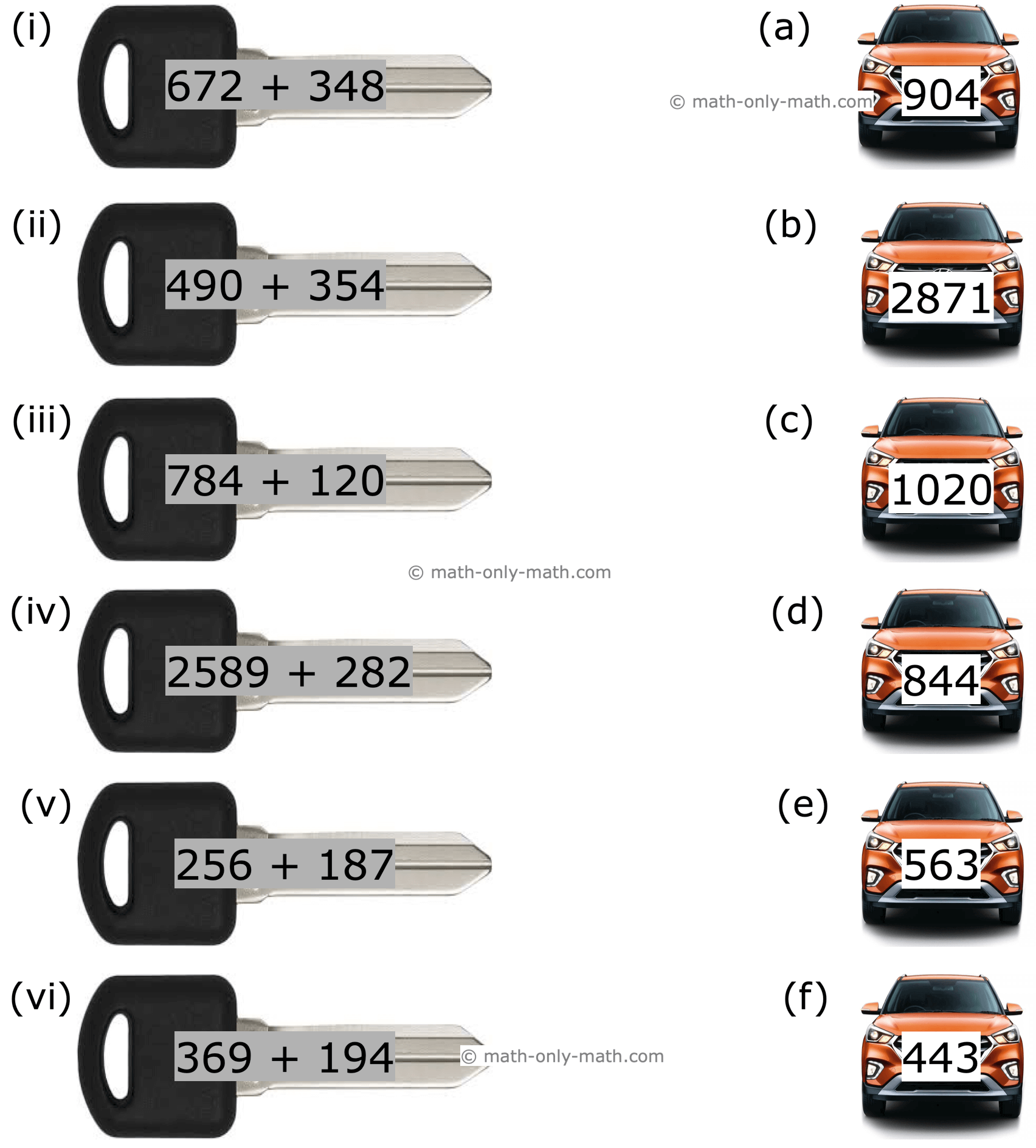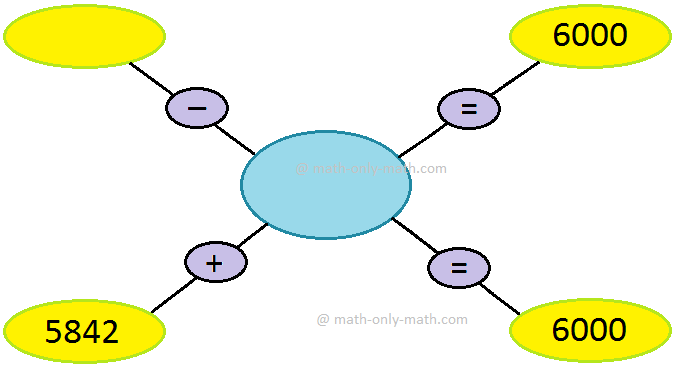Ellipse Formulae
Ellipse formulae will help us to solve different types of problems on ellipse in co-ordinate geometry.
1. \(\frac{x^{2}}{a^{2}}\) + \(\frac{y^{2}}{b^{2}}\) = 1, (a > b)
(i) The co-ordinates of the centre are (0, 0).
(ii) The co-ordinates of the vertices are (± a, 0) i.e., (-a, 0) and (a, 0).
(iii) The co-ordinates of the foci are (± ae, 0) i.e., (- ae, 0) and (ae, 0)
(iv) The length of major axis = 2a and the length of minor axis = 2b.
(v) The major axis is along x axis and the equations of major axes is y = 0.
(vi) The minor axis is along y axis and the equations of minor axes is x = 0.
(vii) The equations of the directrices are: x = ± \(\frac{a}{e}\) i.e., x = - \(\frac{a}{e}\) and x = \(\frac{a}{e}\).
(viii) The eccentricity of the ellipse is b\(^{2}\) = a\(^{2}\)(1 - e\(^{2}\)) or, e = \(\sqrt{1 - \frac{b^{2}}{a^{2}}}\).
(ix) The length of the latus rectum 2 ∙ \(\frac{b^{2}}{a}\) = 2a(1 - e\(^{2}\)).
(x) The distance between the two foci = 2ae.
(xi) The distance between two directrices = 2 ∙ \(\frac{a}{e}\).
(xii) Focal distances of a point (x, y) are a ± ex
(xiii) The co-ordinates of the four ends of latera recta are (ae, \(\frac{b^{2}}{a}\)), (ae, -\(\frac{b^{2}}{a}\)), (- ae, \(\frac{b^{2}}{a}\)) and (- ae, -\(\frac{b^{2}}{a}\)).
(xiv) The equations of latera recta are x = ± ae i.e., x = ae and x = -ae.
2. \(\frac{x^{2}}{b^{2}}\) + \(\frac{y^{2}}{a^{2}}\) = 1, (a > b)
(i) The co-ordinates of the centre are (0, 0).
(ii) The co-ordinates of the vertices are (0, ± a) i.e., (0, -a) and (0, a).
(iii) The co-ordinates of the foci are (0, ± ae) i.e., (0, - ae) and (0, ae)
(iv) The length of major axis = 2a and the length of minor axis = 2b.
(v) The major axis is along Y-axis and the equations of major axes is x = 0.
(vi) The minor axis is along X-axis and the equations of minor axes is y = 0.
(vii) The equations of the directrices are: y = ± \(\frac{a}{e}\) i.e., y = - \(\frac{a}{e}\) and y = \(\frac{a}{e}\).
(viii) The eccentricity of the ellipse is b2 = a\(^{2}\)(1 - e\(^{2}\)) or, e = \(\sqrt{1 - \frac{b^{2}}{a^{2}}}\)
(ix) The length of the latus rectum 2 ∙ \(\frac{b^{2}}{a}\) = 2a (1 - e\(^{2}\)).
(x) The distance between the two foci = 2ae.
(xi) The distance between two directrices = 2 ∙ \(\frac{a}{e}\).
(xii) Focal distances of a point (x, y) are a ± ey
(xiii) The co-ordinates of the four ends of latera recta are (\(\frac{b^{2}}{a}\), ae), (-\(\frac{b^{2}}{a}\), ae), (\(\frac{b^{2}}{a}\), -ae) and (-\(\frac{b^{2}}{a}\), -ae).
(xiv) The equations of latera recta are y = ± ae i.e., y = ae and y = -ae.
3. \(\frac{(x - α)^{2}}{a^{2}}\) + \(\frac{(y - β)^{2}}{b^{2}}\) = 1, (a > b)
(i) The co-ordinates of the centre are (α, β).
(ii) The co-ordinates of the vertices are (α ± a, β) i.e., (α - a, β) and (α + a, β).
(iii) The co-ordinates of the foci are (α ± ae, β) i.e., (α - ae, β) and (α + ae, β)
(iv) The length of major axis = 2a and the length of minor axis = 2b.
(v) The major axis is along parallel to x axis and the equations of major axes is y = β.
(vi) The minor axis is along parallel to y axis and the equations of minor axes is x = α.
(vii) The equations of the directrices are: x = α ± \(\frac{a}{e}\) i.e., x = α - \(\frac{a}{e}\) and x = α + \(\frac{a}{e}\).
(viii) The eccentricity of the ellipse is b\(^{2}\) = a\(^{2}\)(1 - e\(^{2}\)) or, e =\(\sqrt{1 - \frac{b^{2}}{a^{2}}}\)
(ix) The length of the latus rectum 2 ∙ \(\frac{b^{2}}{a}\) = 2a (1 - e\(^{2}\)).
(x) The distance between the two foci = 2ae.
(xi) The distance between two directrices = 2 ∙ \(\frac{a}{e}\).
4. \(\frac{(x - α)^{2}}{b^{2}}\) + \(\frac{(y - β)^{2}}{a^{2}}\) = 1, (a > b)
(i) The co-ordinates of the centre are (α, β).
(ii) The co-ordinates of the vertices are (α, β ± a) i.e., (α, β - a) and (α, β + a).
(iii) The co-ordinates of the foci are (α, β ± ae) i.e., (α, β - ae) and (α, β + ae).
(iv) The length of major axis = 2a and the length of minor axis = 2b.
(v) The major axis is along parallel to Y-axis and the equations of major axes is x = α.
(vi) The minor axis is along parallel to X-axis and the equations of minor axes is y = β.
(vii) The equations of the directrices are: y = β ± \(\frac{a}{e}\) i.e., y = β - \(\frac{a}{e}\) and y = β + \(\frac{a}{e}\).
(viii) The eccentricity of the ellipse is b\(^{2}\) = a\(^{2}\)(1 - e\(^{2}\)) or, e = \(\sqrt{1 - \frac{b^{2}}{a^{2}}}\)
(ix) The length of the latus rectum 2 ∙ \(\frac{b^{2}}{a}\) = 2a (1 - e\(^{2}\)).
(x) The distance between the two foci = 2ae.
(xi) The distance between two directrices = 2 ∙ \(\frac{a}{e}\).
5. The point P (x\(_{1}\), y\(_{1}\)) lies outside, on or inside the ellipse \(\frac{x^{2}}{a^{2}}\) + \(\frac{y^{2}}{b^{2}}\) = 1 according as \(\frac{x_{1}^{2}}{a^{2}}\) + \(\frac{y_{1}^{2}}{b^{2}}\) – 1 > 0, = or < 0.
6. If \(\frac{x^{2}}{a^{2}}\) + \(\frac{y^{2}}{b^{2}}\) = 1 is an ellipse, then its auxiliary circle is x\(^{2}\) + y\(^{2}\) = a\(^{2}\).
7. The equations x = a cos ф, y = b sin ф taken together are called the parametric equations of the ellipse \(\frac{x^{2}}{a^{2}}\) + \(\frac{y^{2}}{b^{2}}\) = 1
8. The co-ordinates of the point having eccentric angle ф can be written as (a cos ф, b sin ф). Here (a cos ф, b sin ф) are known as the parametric co-ordinates of the point P.
2nd Grade Math Practice
From Ellipse Formulae to HOME PAGE
Didn't find what you were looking for? Or want to know more information about Math Only Math. Use this Google Search to find what you need.
Recent Articles
-
Properties of Multiplication | Multiplicative Identity | Whole Numbers
Jan 15, 25 12:08 AM
There are six properties of multiplication of whole numbers that will help to solve the problems easily. The six properties of multiplication are Closure Property, Commutative Property, Zero Property… -
Multiplication Table | Learn Tables from 0 – 25 | Multiplication Table
Jan 14, 25 11:53 PM
In math multiplication table we will learn the tables from 0 – 25. These multiplication tables help the students to learn the essential multiplication facts. Multiplication tables are very important f… -
3rd Grade Math Worksheets |3rd Grade Math Sheets|3rd Grade Math Lesson
Jan 14, 25 11:02 PM
3rd grade math worksheets is carefully planned and thoughtfully presented on mathematics for the students. Teachers and parents can also follow the worksheets to guide the students. -
3rd Grade Subtraction Worksheet | 3-Digit Subtraction Worksheets | Ans
Jan 14, 25 01:57 PM
In 3th Grade Addition Worksheet we will solve how to subtract 3-digit numbers by expansion, subtraction of 3-digit numbers without regrouping, subtraction of 3-digit numbers with regrouping, propertie… -
Facts about Subtraction | Subtraction of Small Numbers|Solved Examples
Jan 14, 25 12:29 AM
The operation to finding the difference between two numbers is called subtraction. Let us know some facts about subtraction which will help us to learn subtraction of large numbers. 1. Subtraction wit…





New! Comments
Have your say about what you just read! Leave me a comment in the box below. Ask a Question or Answer a Question.